NAGHASH ENSEMBLE LIGHTS UP CARNEGIE HALL
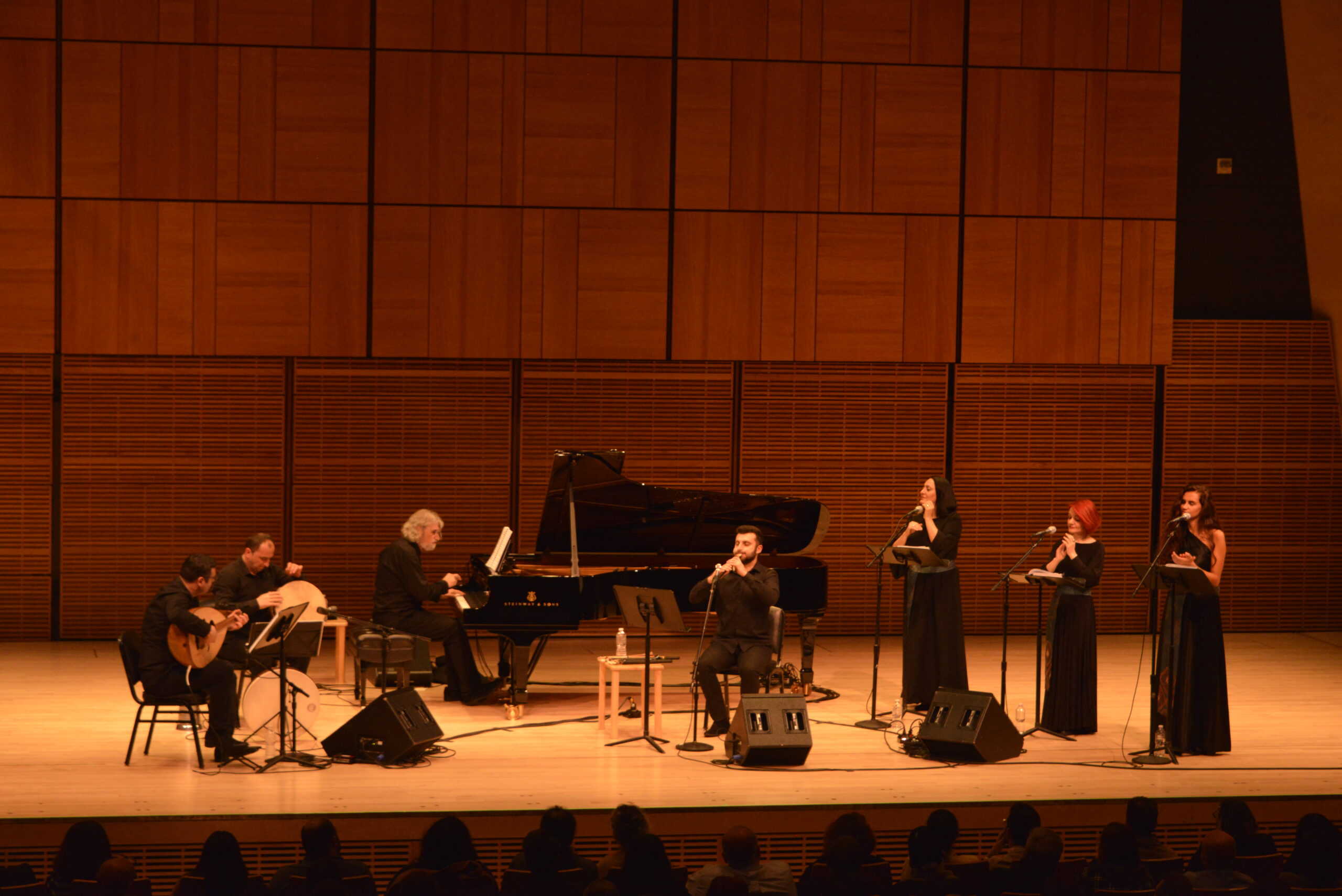
By Florence Avakian
 On March 11, a sold–out house of Armenian and non-Armenian music lovers were treated to a unique and magical style of mystical music at the Zankel Hall of the world-famous Carnegie Hall. The fame of the group was apparent as the huge crowd gave a thunderous ovation as the performers strode onto the stage decorated with large bouquets of spring flowers.
On March 11, a sold–out house of Armenian and non-Armenian music lovers were treated to a unique and magical style of mystical music at the Zankel Hall of the world-famous Carnegie Hall. The fame of the group was apparent as the huge crowd gave a thunderous ovation as the performers strode onto the stage decorated with large bouquets of spring flowers.
Sponsored by the Eastern Prelacy of the Armenian Church, this event was the 38th Musical Armenia concert that has previously launched the musical careers of budding Armenian artists. Also attending was Armenia’s Ambassador to the United Nations Mher Margaryan.
Archbishop Anoushavan, Prelate, called Musical Armenia “a sublime expression of our shared human condition.” Art, he said, “and more specifically music, are perhaps the highest shortcuts to our sense of the divine.”
This concert took a different turn as it presented artists who are already the top professionals in their fields —an American born composer and pianist who created and directed the stirring music, and from Armenia three top notch singers and three instrumentalists playing the authentic Armenian duduk, shvi, pku, zurna, oud, dhol, daf, and dumbek.

However, the real inspiration of this performance was the spiritual poetry of priest Mkrtich Naghash (1394–1470) and Kostandin Erznkatsi (ca.1250–1320). Forced to live as an exile by Ottoman Turkey, Naghash, left behind timeless poetry in middle Armenian language. “These poems spoke of war, plague and pestilence, so relevant because they are all happening in today’s world,” said John Hodian, the composer, pianist, director and creator of the Naghash Ensemble.
Hodian spent many years creating this moving music. The inspiration came one day, when he wandered into the ancient Temple of Garni and heard Hasmik Baghdasarian singing medieval Armenian spiritual music. “Her voice was astounding,” he said. “The unique acoustics of Garni, and the beauty of the surroundings haunted me for days afterwards, and I became determined to compose something that would use this sound in a new way.”
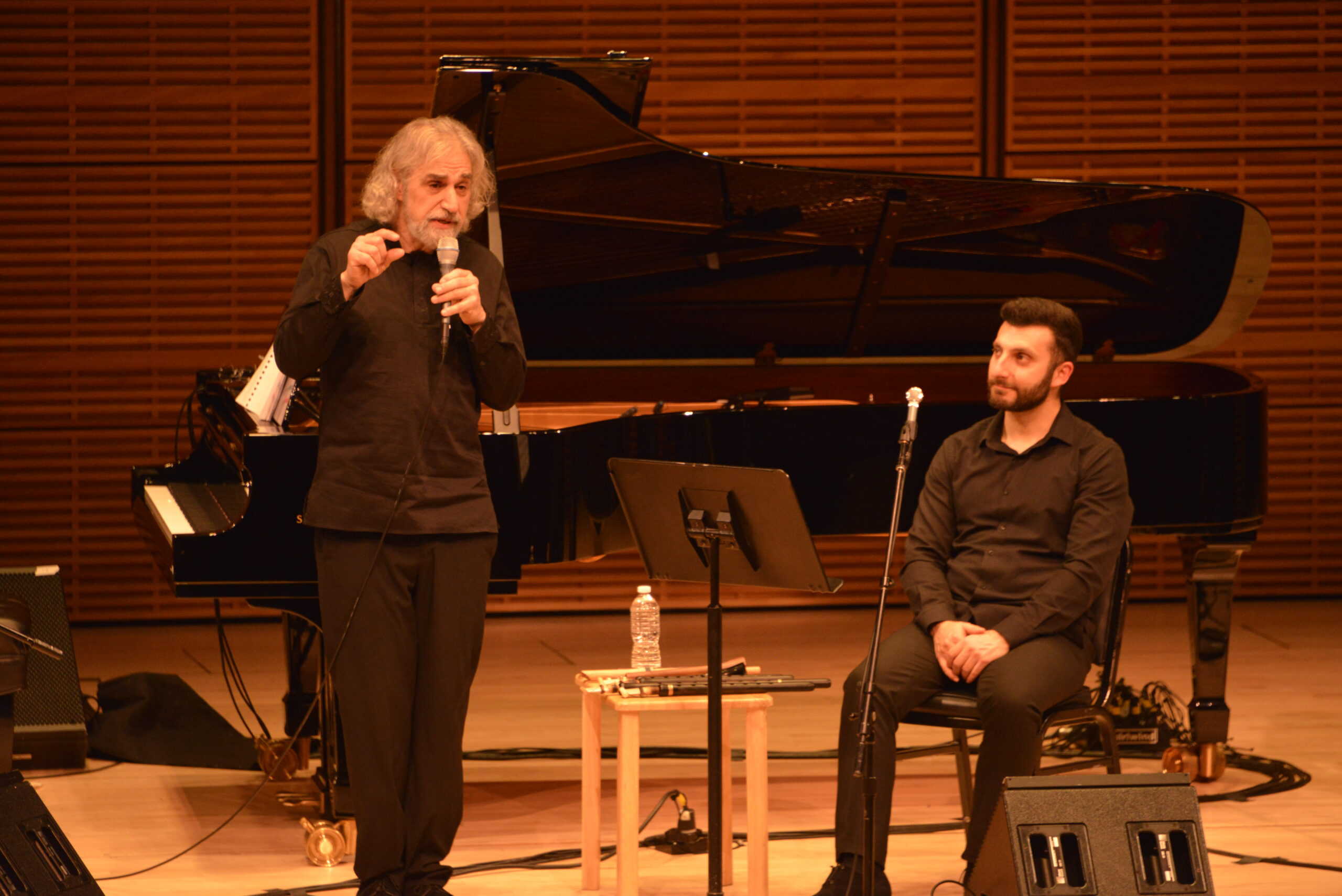 Hodian spent months researching in Yerevan, New York, and Berlin libraries until he found a small fragment of a text by priest Mkrtich Naghash. “The words leaped off the page and into my soul,” he said. “I knew I had found my text.” The powerful poems of Naghash on the plight of the ghareeb (the exiled) had a special meaning for Hodian, grandson of Genocide survivors.
Hodian spent months researching in Yerevan, New York, and Berlin libraries until he found a small fragment of a text by priest Mkrtich Naghash. “The words leaped off the page and into my soul,” he said. “I knew I had found my text.” The powerful poems of Naghash on the plight of the ghareeb (the exiled) had a special meaning for Hodian, grandson of Genocide survivors.
“Songs of Exile”
 The unique performance at Zankel Hall, which combined Armenian, classical, folk, modern and jazz music, was described by eminent composer Tigran Mansurian as “the sound of ancient Armenia reimagined for the 21st century.” It is a “profound rumination on man’s relationship to God from the perspective of a monk forced to live in exile for many years, losing his son in battle, and never seeing his family and friends again,” said John Hodian.
The unique performance at Zankel Hall, which combined Armenian, classical, folk, modern and jazz music, was described by eminent composer Tigran Mansurian as “the sound of ancient Armenia reimagined for the 21st century.” It is a “profound rumination on man’s relationship to God from the perspective of a monk forced to live in exile for many years, losing his son in battle, and never seeing his family and friends again,” said John Hodian.
The first-class performers included sopranos Hasmik Baghdasarian and Tatevik Movsesyan, alto Arpine Ter-Petrosyan, and instrumentalists Harutyun Chkolyan on duduk, shvi, pku, zurna, Aramayis Nikoghosyan on oud, and Tigran Hovhannisyan on dhol, daf and dumbek. A poetic Naghash meditation before each song was voiced by Garen Hamamjian, an American born candidate for the priesthood at New York’s St. Nersess Armenian Seminary.
The dark themes of the songs in the first half of the concert included the modern, jazzy “Meditation on Greed”; the thoughtful and brilliantly harmonic “If in this World by Sin You Wander,” with Baghdasaryan as a standout; the soul-searing “Lamentations on the Death of a Child”; and the mystical and exotic “Woe to Those That Keep a Grudge”.
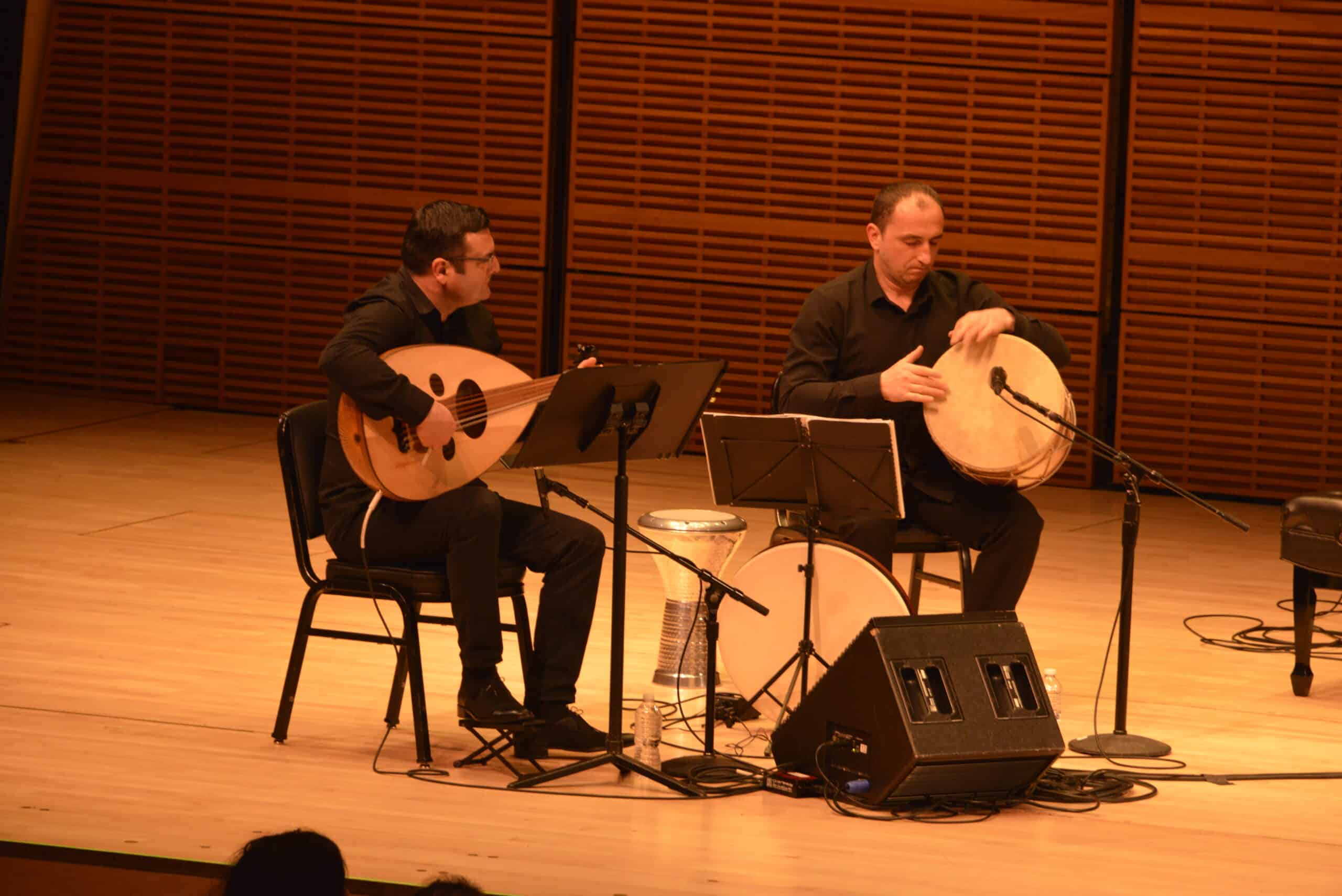
All songs were very rhythmic with recognizable Armenian undertones, and they reflected the anxiety of today’s world. The instrumentalists especially expressed the heartfelt Armenian feeling, with the singers also creating emotional body and hand movements as they performed. There was also a definite beat and modernistic flavor appealing to today’s generation.
Before the intermission, Hodian related that that the group had previously performed extensively in Armenia and Europe. This trip includes a first-time multi-city tour throughout the United States.
The performance continued with the evocative “Another Answer”; the haunting “Work of Darkness”; and finally, the slow and mournful start of “Lamentations for the Dead” evolving to frantic speed and action. The repetitive style of the music persisted, but there was Armenian feeling throughout. An encore was performed to the delight of the audience, the lilting “Armenian Lullaby”, dedicated to all women putting a baby to sleep.
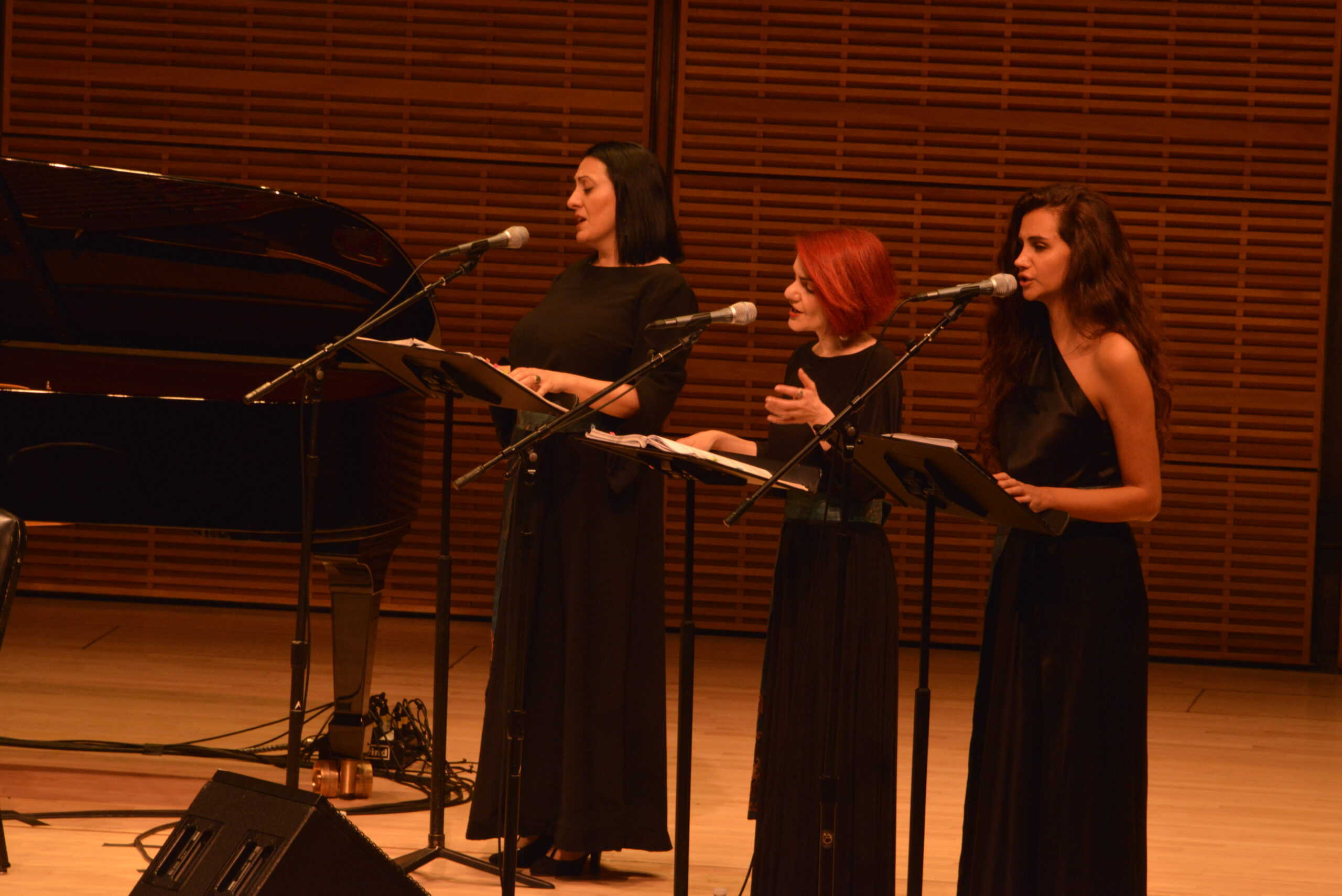 If there was anything missing in the performance, it was the spiritual and mystical words of the poems by Naghash and Erznkatsi that should have accompanied the music. Had it been distributed to the audience, it would have greatly enhanced the powerful meaning of the presentation.
If there was anything missing in the performance, it was the spiritual and mystical words of the poems by Naghash and Erznkatsi that should have accompanied the music. Had it been distributed to the audience, it would have greatly enhanced the powerful meaning of the presentation.
Following a thunderous standing ovation lasting several minutes, John Hodian introduced the musicians, all born in Yerevan, who voiced their individual feelings. He also expressed his deep appreciation to the Eastern Armenian Prelacy, Archbishop Anoushavan, and the Musical Armenia Committee for their dedication to the musicians and their hard work preceding the performance.
Naghash Ensemble
Mkrtich Naghash was the bishop of Amida (present day Diyarbakir) during the 15th century, a time when Armenians lived in dispersion, far from their ancestral lands. When the Armenian state vanished with the fall of Cilicia in 1375, Naghash became a respected figure by all groups. He was honored not only by Armenians, but also by Turks, Arabs, Kurds, Jews and many others. He was widely famous for his manuscript illuminations.
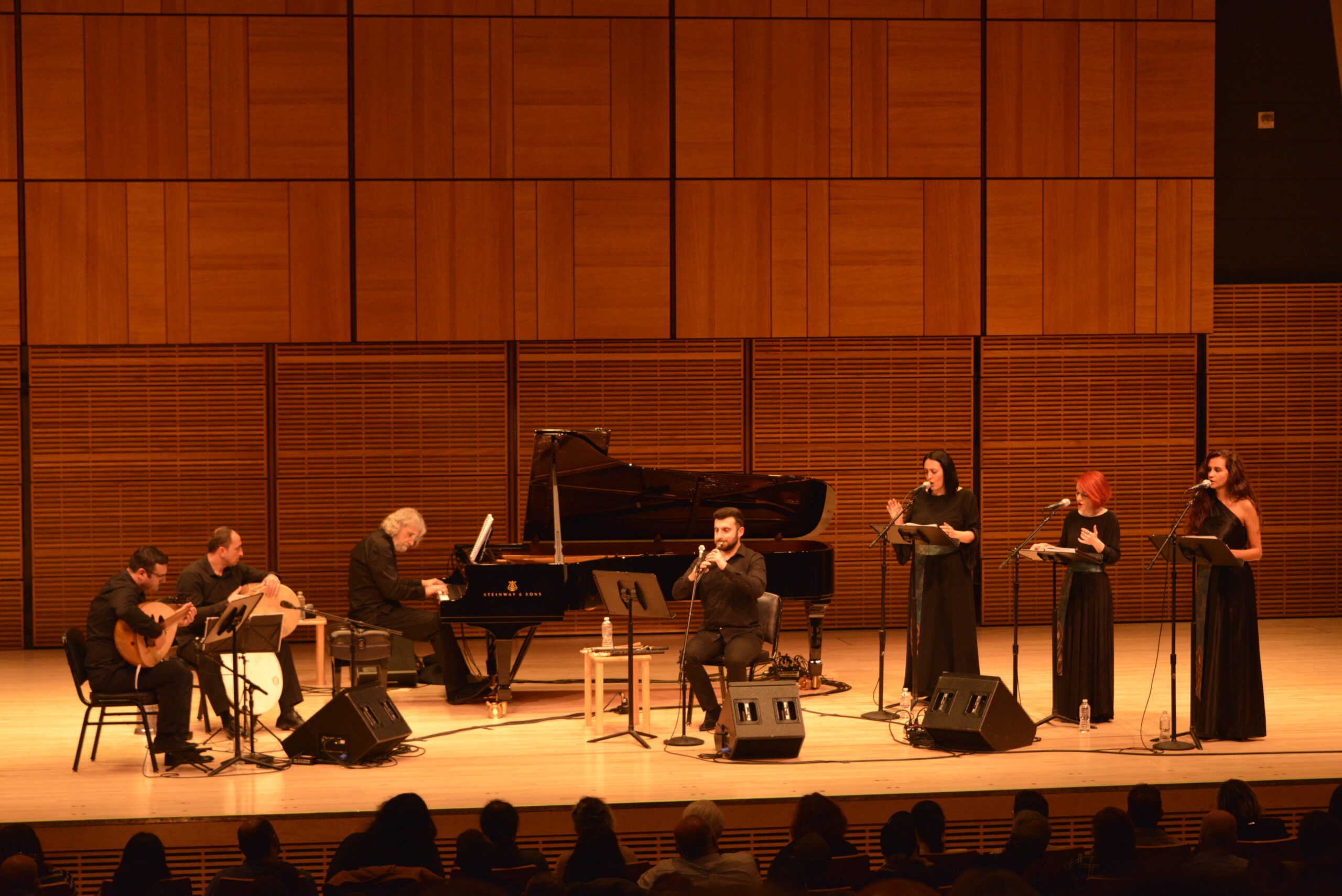 “The voice of Naghash calls on us to rely on each other to reaffirm the ties that bind individuals into communities, even in uncertain times of our own.” Hodian, the creator of the Naghash Ensemble, has been mainly performing in classical venues. “I grew up as an Armenian, but my background is Western music. Born in Philadelphia, he received his master’s degree in composition and conducting at the Philadelphia College for the Performing Arts. He has been the conductor of the Philadelphia New Music Ensemble and has conducted several European orchestras.
“The voice of Naghash calls on us to rely on each other to reaffirm the ties that bind individuals into communities, even in uncertain times of our own.” Hodian, the creator of the Naghash Ensemble, has been mainly performing in classical venues. “I grew up as an Armenian, but my background is Western music. Born in Philadelphia, he received his master’s degree in composition and conducting at the Philadelphia College for the Performing Arts. He has been the conductor of the Philadelphia New Music Ensemble and has conducted several European orchestras.
He has also been selected as a resident composer for the Sundance Theater Institute and has collaborated with celebrated theater figures. He is a two-time winner of the New Dramatist Award for musical theater.
Since moving to Armenia in 2005, he has spent the last fifteen years composing music for The Naghash Ensemble. “The musical conceptions of these wonderful artists performing tonight, and the profound lyricism of Mkrtich Naghash and Kostandin Erznkats’i have been my guides,” he commented.
Leading soprano Hasmik Baghdasaryan is Armenia’s main performer of medieval spiritual music. She has performed and recorded with many of Armenia’s finest ensembles and contemporary composers. She calls the Naghash Enzemble’s music the “most beautiful music I have ever sung. These compositions reach down into the deepest corners of the soul and translate them back to the world as music.” 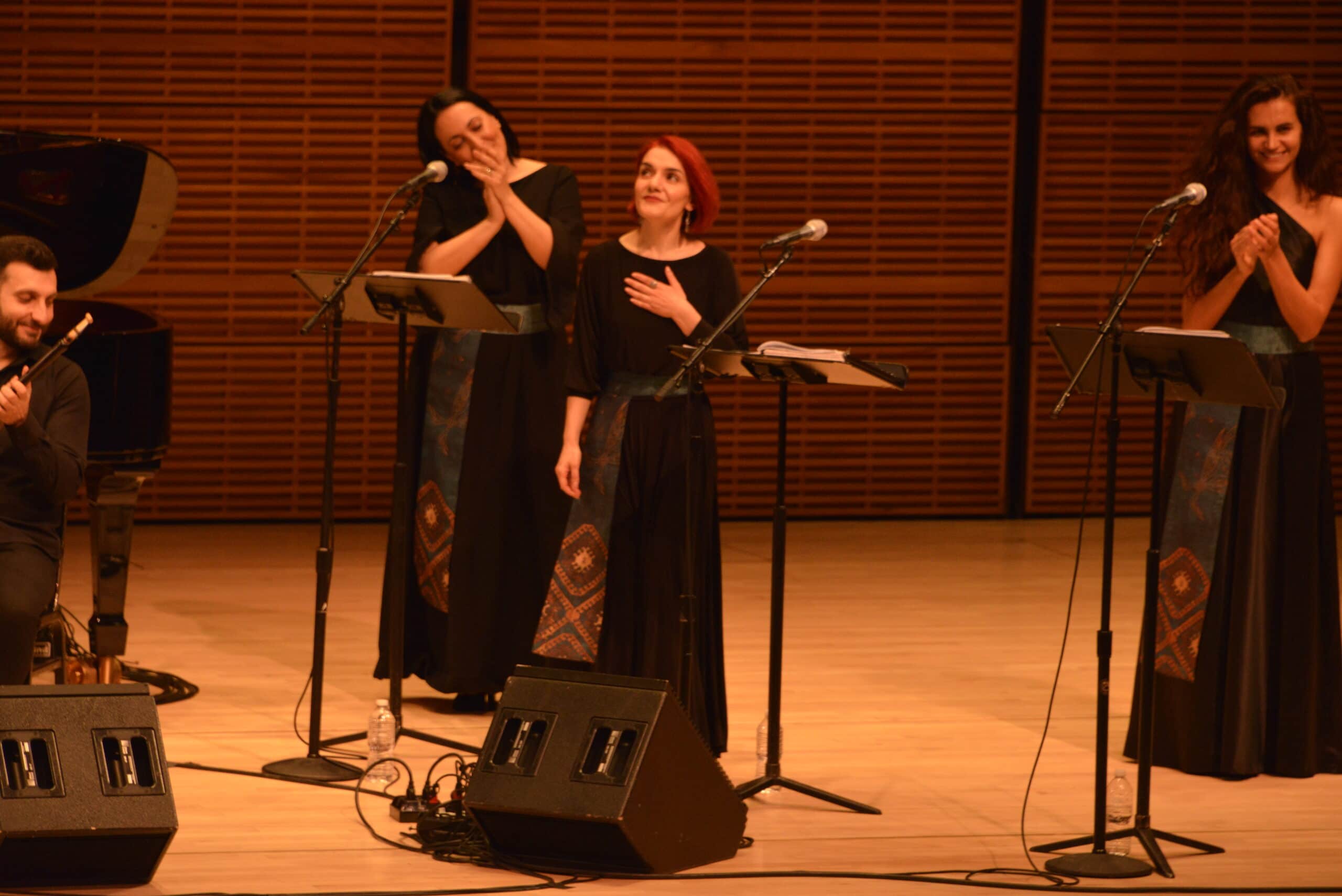
Soprano Tatevik Movsesyan has won international acclaim for her outstanding performances of chamber music. She is a graduate of the acclaimed Gomitas State Conservatory.
Alto Arpi Ter-Petrosyan has a remarkable vocal range and possesses the deepest female voice in Armenia. She graduated from the State Educational Khachatur Abovyan University in Yerevan, and recently has gained a great international following as “Arpi Alto.”
Multi-instrumentalist Harutyun Chkolyan, a specialist in Armenian folk wind instruments, graduated from the Gomitas State Conservatory, and now teaches at this renowned institution. He has also performed with several international orchestras.
Oudist Aramayis Nikoghosyan began playing the oud at age six. He completed his education at Romanos Melikyan College of Music, and later attended the Komitas State Conservatory. He has performed with many outstanding Music Ensembles. \
A master of dhol and dumbek, Tigran Hovhannisyan performs with the Armenian National Orchestra. He was a prize-winning student at the Henrik Igityan Music School for Folk Instruments and at the Romanos Melikyan College of Music. He also is a sought-after teacher of percussion instruments.
Prelacy Reception

Following the profound music and thought-provoking performance, the artists were invited to a reception held at the Prelacy of the Armenian Church in New York, where Archbishop Anoushavan graciously welcomed them, and several guests voiced their feelings.
Gayane Danielian, Vice President of Ardani Artists, called the concert “absolutely unique, the voices so pure —with the very first sound, I felt my heart trembling, especially during the ballad about the dying child.” The musicians, she added “were sensational.”
Dr. Jesse Arlen, Director of the Zohrab Information Center at the Armenian Diocese, commented that both medieval Armenian poets were known only to specialists of the Armenian Church. “I was just so impressed because these legendary poets featured had their poetic writings brought to a wide current audience,” he said. “And the music was a whole other experience, glorious voices, a different dimension.”
Production designer Khajag Zeitlian called the performance “refreshing and beautifully composed using authentic Armenian instruments.”
And Dr. Carlo Bayrakdarian, whose sister, the noted singer Isabel Bayrakdarian performed at the 1997 concert of Musical Armenia, said it is “undeniable that we Armenians are creators of music that will be recognized internationally.”
Musical Armenia was established in 1982 by Archbishop Mesrob Ashjian and the Prelacy Ladies Guild. The Musical Armenia Committee includes Julie Kedersha, Sophie Khachatryan, Annita Nerses, Varsenne Sarkissian, and Levon Tatevossian.
